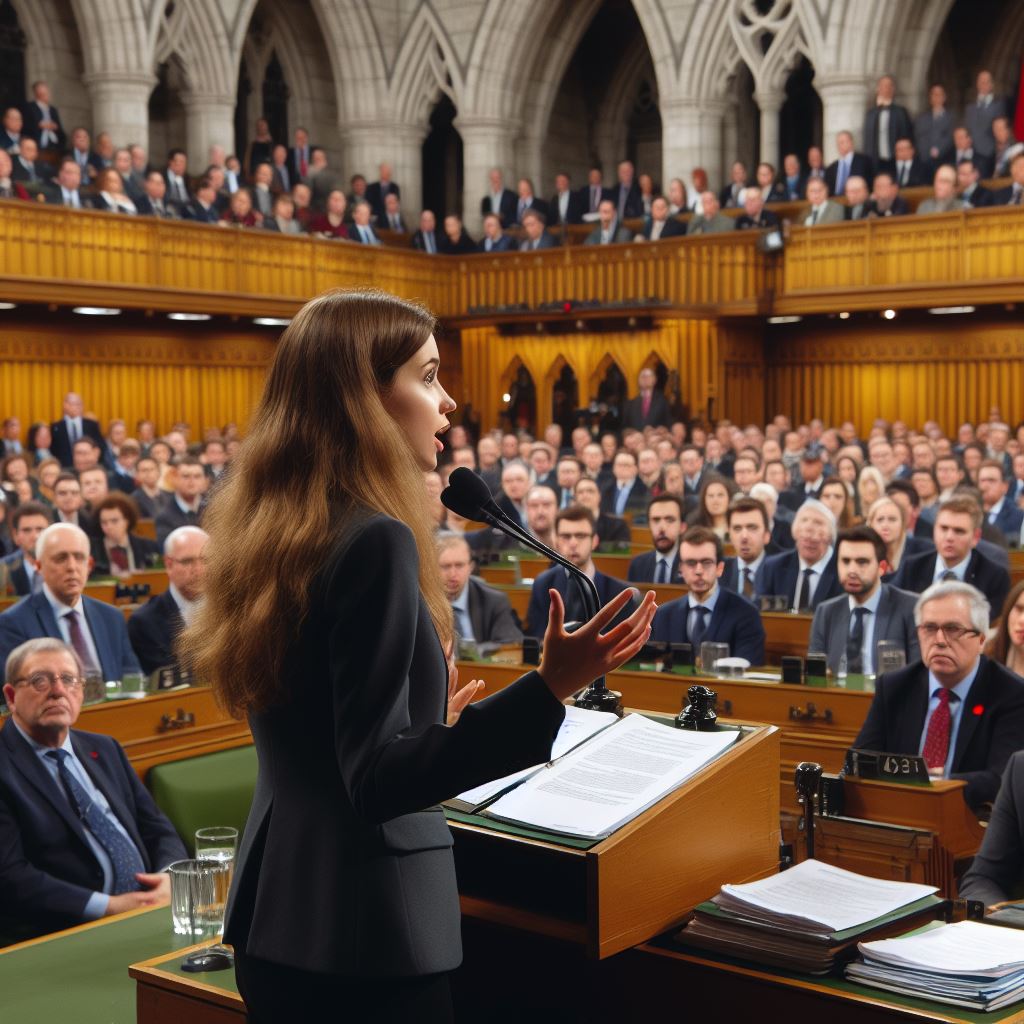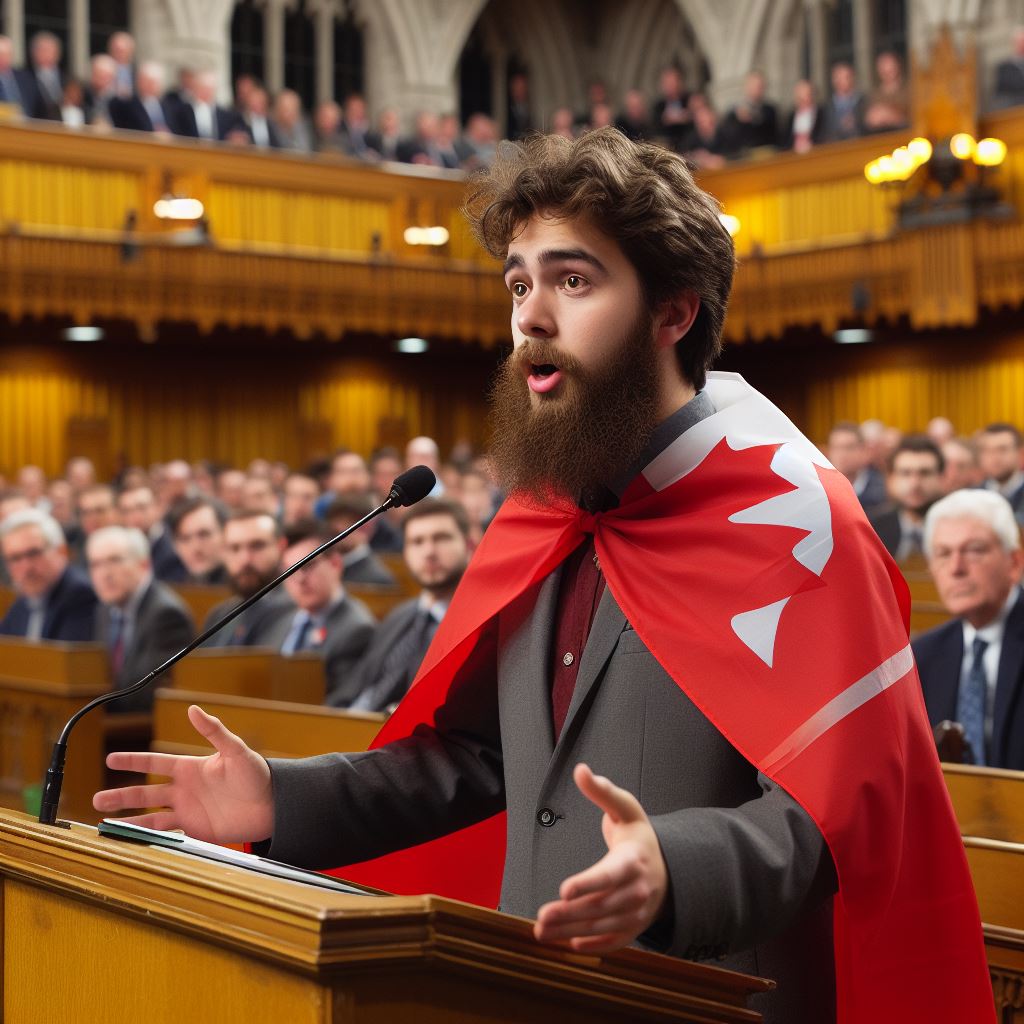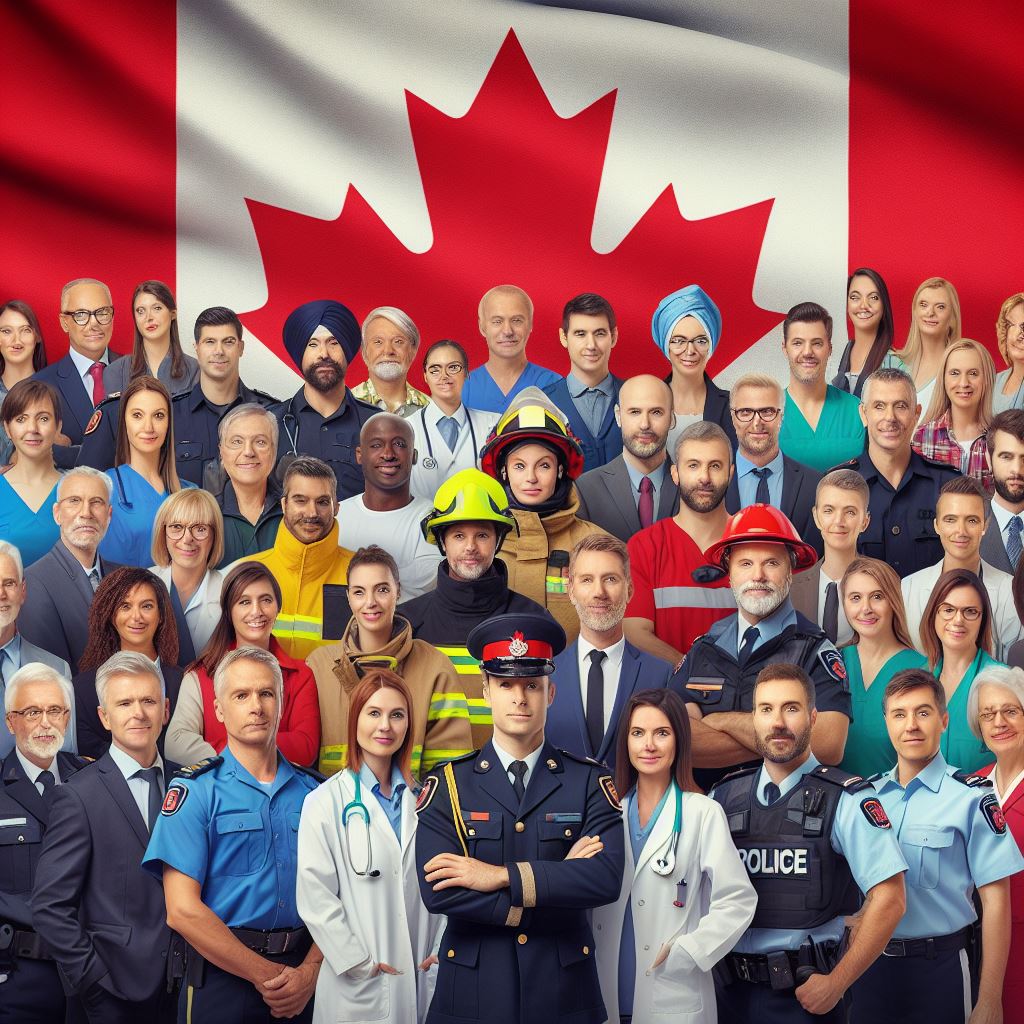Introduction
Canadian women in politics face numerous challenges in the political sphere.
These challenges range from gender bias to lack of representation in leadership positions.
Despite progress, women continue to be underrepresented and marginalized in Canadian politics.
Gender stereotypes and biases often undermine the credibility and effectiveness of women politicians.
Women also face challenges in fundraising, as they often receive less financial support compared to their male counterparts.
The media tends to focus on women politicians’ appearance and personal lives rather than their policies.
Women in politics often struggle to strike a balance between their professional and personal lives.
Sexual harassment and discrimination are prevalent in the political sphere, creating a hostile environment for women.
Party culture and the “old boys’ club” mentality further discourage women from entering politics.
The lack of diverse perspectives and experiences hinders effective decision-making and policy development.
Canadian women in politics face not only external challenges but also self-doubt and imposter syndrome.
Efforts must be made to break down barriers and create a more inclusive and supportive political environment for women.
In short, Canadian women in politics face significant challenges, from gender bias to underrepresentation.
Addressing these challenges will lead to a more equitable and effective political system for all Canadians.
Historical Background
The historical context of women’s participation in Canadian politics
Throughout history, women’s participation in Canadian politics has been challenged and limited.
Women’s rights were not recognized until the late 19th century, entrenching gender inequality and inhibiting their involvement in the political sphere.
Milestones and notable women politicians in Canada
At the turn of the 20th century, significant milestones paved the way for women’s political rights in Canada.
In 1916, Manitoba became the first province to grant women the right to vote in provincial elections, followed by Saskatchewan and Alberta in the same year.
This marked a monumental shift in women’s participation, but progress was slow.
It wasn’t until 1921 that Agnes Macphail became the first woman elected to the House of Commons.
Her presence served as a beacon of hope for women across the country, igniting a desire for change.
Macphail’s distinction opened doors for subsequent generations of women to enter the world of politics and have their voices heard.
Since then, there have been many notable women politicians in Canada who have made significant contributions to the field.
In 1960, Ellen Fairclough became the first woman appointed to a federal cabinet position, breaking barriers for future female leaders.
This milestone paved the way for women like Jeanne Sauvé, who became Canada’s first female Speaker of the House of Commons in 1980.
Unlock Your Career Potential
Visualize a clear path to success with our tailored Career Consulting service. Personalized insights in just 1-3 days.
Get StartedThe progress made over the years
Over the years, progress has been made in increasing the representation of women in politics.
In 1974, Canada’s Royal Commission on the Status of Women recommended affirmative action measures to encourage women’s participation.
As a result, the number of women in politics began to rise steadily.
In recent years, women have held prominent positions in Canadian politics.
Kim Campbell became Canada’s first female Prime Minister in 1993, proving that women can ascend to the highest office in the country.
More recently, Chrystia Freeland became Canada’s first female Minister of Finance in 2020.
This progress, however, should not overshadow the challenges women continue to face in Canadian politics.
Despite constituting more than half of the population, women remain underrepresented in decision-making positions.
The barriers they encounter include systemic sexism, gender biases, and societal expectations that limit their political ambitions.
Efforts to address these challenges have resulted in various campaigns and initiatives aimed at promoting women’s participation in politics.
Organizations like Equal Voice Canada work towards achieving gender parity in all levels of government.
These initiatives help raise awareness about the importance of female representation and provide support to aspiring women politicians.
Despite the strides made, women’s political participation in Canada still has room for improvement.
The battle for gender equity is ongoing, and continued efforts are crucial to ensure equal opportunities for women in politics.
With each milestone achieved and each woman breaking through the barriers, progress is gradually being made towards a more inclusive political landscape in Canada.
Read: Youth in Politics: Canada’s Rising Stars
Gender Bias and Discrimination
The gender bias and discrimination faced by women in politics
Women in politics face significant gender bias and discrimination, hindering their progress.
For instance, female politicians often face scrutiny over their appearance and personal lives.
Critics have argued that male politicians are rarely subject to the same level of scrutiny.
This bias can have a detrimental impact on women’s political careers, discouraging their participation.
Examples of instances where gender bias affected women politicians
Former Canadian Member of Parliament, Belinda Stronach, experienced gender bias during her tenure.
Stronach faced criticism for her affluent background and was often portrayed as an inexperienced socialite.
Such biased portrayals not only undermined Stronach’s credibility but also diminished her policy contributions.
Similarly, Catherine Callbeck, the first female premier of Prince Edward Island, faced gender bias.
During her tenure, Callbeck was repeatedly criticized for her communication style and perceived lack of assertiveness.
This biased scrutiny overshadowed Callbeck’s achievements and devalued her impact on governance.
Impact of Sexism on Their Careers and Public Perception:
The impact of sexism on women politicians extends beyond their individual careers to public perception.
Research has shown that female politicians often receive disproportionate media coverage compared to their male counterparts.
Media coverage often focuses on their appearance, personal lives, and style rather than their policy positions.
Such biased reporting perpetuates gender stereotypes and prevents women politicians from being taken seriously.
This unfair portrayal affects public perception and contributes to the underrepresentation of women in politics.
Moreover, female politicians are often labeled as “emotional” or “bossy” when expressing assertiveness.
These labels seek to undermine their credibility and perpetuate gender stereotypes in the political arena.
Sexist attitudes also contribute to challenges faced by women in political leadership positions.
Women in leadership roles are often seen as less capable or “risky” compared to their male counterparts.
As a result, they may encounter resistance and obstacles when attempting to implement their policy agendas.
Read: How Canadian Politicians Influence Policy
Balancing Political Ambitions and Personal Life
Canadian women in politics face numerous challenges when trying to balance their political aspirations and personal life.
The pressures of family and societal expectations often add to these difficulties.
However, many women have employed various strategies to navigate this delicate balancing act.
Challenges Faced by Canadian Women in Politics
- Lack of support systems: Women often find it challenging to juggle their political careers and personal responsibilities due to limited support from their families and society.
- Long working hours: Politics demands extensive working hours, making it difficult for women to find time for their families and personal lives.
- Negative stereotypes: Women politicians frequently face gender-based stereotypes and biases that undermine their credibility and portray them as incapable of balancing work and family life.
- Double standards: Female politicians are often subjected to higher scrutiny and criticism regarding their appearance, marital status, and parenting abilities compared to their male counterparts.
Pressures of Family and Societal Expectations
Canadian women in politics also have to deal with the pressures arising from family expectations and societal norms:
- Expectations of traditional gender roles: Women are often expected to prioritize their roles as wives and mothers over their political aspirations.
- Disapproval from family members: Some female politicians face disapproval or lack of support from their families, who may have traditional beliefs regarding women’s roles.
- Media scrutiny: The media often focuses on the personal lives of women politicians, making it challenging for them to maintain a work-life balance while constantly under the public eye.
- Negative public opinion: Women in politics might face criticism for prioritizing their careers, with some perceiving them as neglecting their families.
Strategies Employed by Women in Politics
To navigate these challenges, many Canadian women in politics have adopted strategies that help them balance their political ambitions and personal lives:
- Building a strong support network: Creating a network of supportive family members, friends, and colleagues can provide the necessary assistance in managing both spheres.
- Delegating responsibilities: Women in politics often delegate household and caregiving tasks to their partners, family members, or hired help to alleviate their workload.
- Promoting flexible work arrangements: Advocating for flexible schedules and telecommuting options allows women politicians to have more control over their time and better reconcile work and personal commitments.
- Setting boundaries: Establishing clear boundaries between work and personal life is crucial to ensure that both aspects receive adequate attention and effort.
- Self-care and well-being: Prioritizing self-care activities, maintaining a healthy work-life balance, and seeking support for mental and emotional well-being are essential for women in politics.
In fact, Canadian women in politics face significant challenges when attempting to balance their political ambitions with their personal lives.
The pressures of family and societal expectations, coupled with various gender-related hurdles, add to their difficulties.
However, through the implementation of strategies such as building support networks, delegating responsibilities, and promoting flexibility, women politicians are finding ways to successfully manage this delicate balancing act.
Read: Understanding Political Campaigns in Canada
Lack of Representation
The issue of underrepresentation of women in Canadian politics
The issue of underrepresentation of women in Canadian politics is concerning and needs to be addressed urgently.
The statistics and the current state of representation
Statistics show that women make up only a small percentage of political representatives in Canada.
As of 2021, women hold only 29% of seats in the House of Commons and 37% of seats in the Senate.
The current state of representation indicates a significant gender gap in political decision-making.
The consequences of having a lack of diversity in political decision-making
Having a lack of diversity in political decision-making has severe consequences for society.
It leads to an imbalance of perspectives, with women’s voices and experiences being underrepresented.
This lack of representation perpetuates gender inequality and hinders progress towards gender equality.
It also affects policy outcomes, as diverse perspectives and experiences are necessary for effective decision-making.
Without adequate representation, issues and concerns specific to women may be overlooked or ignored.
A lack of diversity in political leadership also sends a negative message to young women and girls.
It discourages them from pursuing political careers and further perpetuates the underrepresentation problem.
Furthermore, research shows that diverse decision-making bodies are more effective and make better decisions.
Increased gender diversity in politics can lead to policies that address issues such as gender-based violence, pay equity, and childcare.
Countries with higher female representation in politics have implemented progressive legislation to promote gender equality.
For example, Rwanda has the highest percentage of women in parliament globally and has implemented laws to combat gender-based violence effectively.
In contrast, Canada’s slow progress in achieving gender parity in politics is a missed opportunity for positive change.
Efforts should be made to encourage more women to participate in politics, both as voters and as candidates.
Additionally, creating a more inclusive and supportive political environment can help overcome barriers women face in entering politics.
In essence, the underrepresentation of women in Canadian politics is a pressing issue that demands immediate attention.
The lack of diversity in political decision-making has severe consequences for society, perpetuating gender inequality and hindering progress towards gender equality.
Efforts must be made to encourage women’s participation in politics, through measures such as recruiting and supporting women candidates and implementing quotas or targets for women’s representation.
By addressing this issue, Canada can create a more inclusive and effective political system that better represents its population and promotes gender equality.
Read: The Impact of Social Media on Politicians

Uncover the Details: A Day in the Life of a Canadian Policeman
Barriers to Entry
The barriers that hinder women’s entry into politics
When it comes to Canadian women in politics, there are numerous barriers that hinder their entry into this field.
These barriers can be categorized into financial and institutional obstacles. Unfortunately, these challenges have a significant impact on women’s political careers.
Financial Barriers
- Lack of financial resources often prevents women from considering a career in politics.
- Campaigning requires substantial funding for advertising, travel expenses, and hiring staff.
- Women, especially those from marginalized communities, may have limited access to financial support networks.
- Inadequate financial resources create difficulties in running effective campaigns and connecting with constituents.
- Raising funds for political campaigns is often more challenging for women compared to their male counterparts.
These financial barriers disproportionately affect women and limit their ability to compete on an equal footing in politics.
Institutional Barriers
- Gender bias within political parties can discourage women from getting involved in the first place.
- Male-dominated party structures can be unwelcoming and resistant to changes that promote gender equality.
- Limited representation of women in key positions further undermines their chances of advancement.
- Party nomination processes sometimes favor incumbents, making it difficult for new female candidates to succeed.
- Existing networks and connections within political institutions often exclude women, hindering their entry.
These institutional barriers create a systemic imbalance that deters women from pursuing political careers.
Impact on Women’s Political Careers
The barriers women face in entering politics have a profound impact on their political careers and representation in decision-making roles.
Firstly, the lack of financial resources limits the ability of women to run successful campaigns.
This translates into diminished visibility, fewer campaign events, and ultimately, reduced voter support.
Secondly, the institutional barriers within political parties marginalize women’s voices and abilities.
This lack of representation reinforces stereotypes and discourages further participation, perpetuating the cycle of underrepresentation.
Furthermore, the absence of women at higher levels of political decision-making means that their perspectives and experiences often go unheard and unaddressed.
The underrepresentation of women in politics results in policy decisions that may not reflect the needs and interests of women in society. This disparity can perpetuate gender inequities and hinder progress towards gender equality.
Addressing these barriers requires a multi-faceted approach. Political parties need to actively promote women’s participation by providing training, mentorship, and opportunities for advancement.
Additionally, there should be efforts to establish dedicated funding mechanisms to support female candidates’ campaigns, ensuring a level playing field.
The Canadian government also plays a pivotal role in dismantling these barriers by implementing policies that promote gender equality and representation in politics.
It’s essential to create a supportive environment that encourages women to pursue political careers, breaking down the barriers that impede their entry into this crucial domain of decision-making.
Advocacy and Progress
Efforts made by organizations and individuals to promote the inclusion of women in politics have played a crucial role in addressing the challenges they face.
Here, we explore some of these initiatives and the progress that has been made in recent years.
Organizational Advocacy
- Women’s organizations such as Equal Voice and the Famous 5 Foundation have actively worked to increase the representation of women in politics.
- They provide resources and support to women interested in running for office, conducting training programs and mentorship opportunities.
- These organizations also undertake research projects to identify barriers and recommend solutions for women’s political participation.
- Through their advocacy efforts, they strive to change public perception and challenge gender biases that hinder women’s progress in politics.
Individual Initiatives
- Many women politicians have taken the lead in advancing women’s rights and promoting gender equality from within the political system.
- They champion policies that address the unique challenges faced by women, such as affordable childcare and pay equity.
- These trailblazers serve as role models for aspiring female politicians, inspiring them to actively engage in the political arena.
Government Initiatives
- The Canadian government has implemented various initiatives and policies to increase women’s representation in politics.
- For instance, the Federal Gender Equality Cabinet Committee was established to ensure gender considerations are embedded in decision-making processes.
- The Canada Elections Act also includes measures like the Political Financing Reform, which promotes gender equality among political candidates.
- Additionally, political parties are encouraged to adopt voluntary quotas to increase the number of women candidates.
Progress Made
Thanks to these collective efforts, progress has been seen in recent years:
- The 2019 federal election witnessed a record-breaking number of women elected to Parliament, with 98 female Members of Parliament.
- Provinces like Ontario and Alberta have achieved historic highs in women’s representation, surpassing the national average.
- Indigenous women are also making considerable strides in politics, with more representation at various levels of government.
- Although challenges persist, there is a growing recognition of the importance of women’s participation in politics for a more inclusive democracy.
The advocacy efforts of organizations and individuals, along with government initiatives, have undoubtedly improved the representation of women in Canadian politics.
While progress has been made, continued support and action are necessary to overcome the remaining challenges and work towards full gender equality.
Conclusion
Canadian women in politics face significant challenges that need to be addressed for a more inclusive political landscape.
The main challenges include gender bias, underrepresentation, and a lack of support.
It is important to emphasize the significance of addressing these challenges.
Gender bias perpetuates inequality and stifles the voices and perspectives of women.
Underrepresentation limits the diversity of ideas and experiences in decision-making processes.
And the lack of support discourages women from pursuing political careers, leading to a significant loss of talent.
To create a more inclusive political landscape, continued efforts must be made to support and empower women in politics.
This includes implementing policies that promote gender equality and diversity, such as quotas and affirmative action measures.
It also involves providing mentorship, training, and financial support to help women overcome the barriers they face.
It is crucial for government bodies, political parties, and civil society organizations to work collaboratively in creating a conducive environment for women’s participation in politics.
By doing so, we can leverage the talents and perspectives of Canadian women, leading to better policy outcomes and a stronger democracy.
Addressing the challenges faced by Canadian women in politics is not just a matter of fairness, but a necessity for a truly representative and democratic political landscape.
Let us continue to support and empower women to actively participate in politics and shape the future of our nation.
Together, we can build a more inclusive and equitable society.




